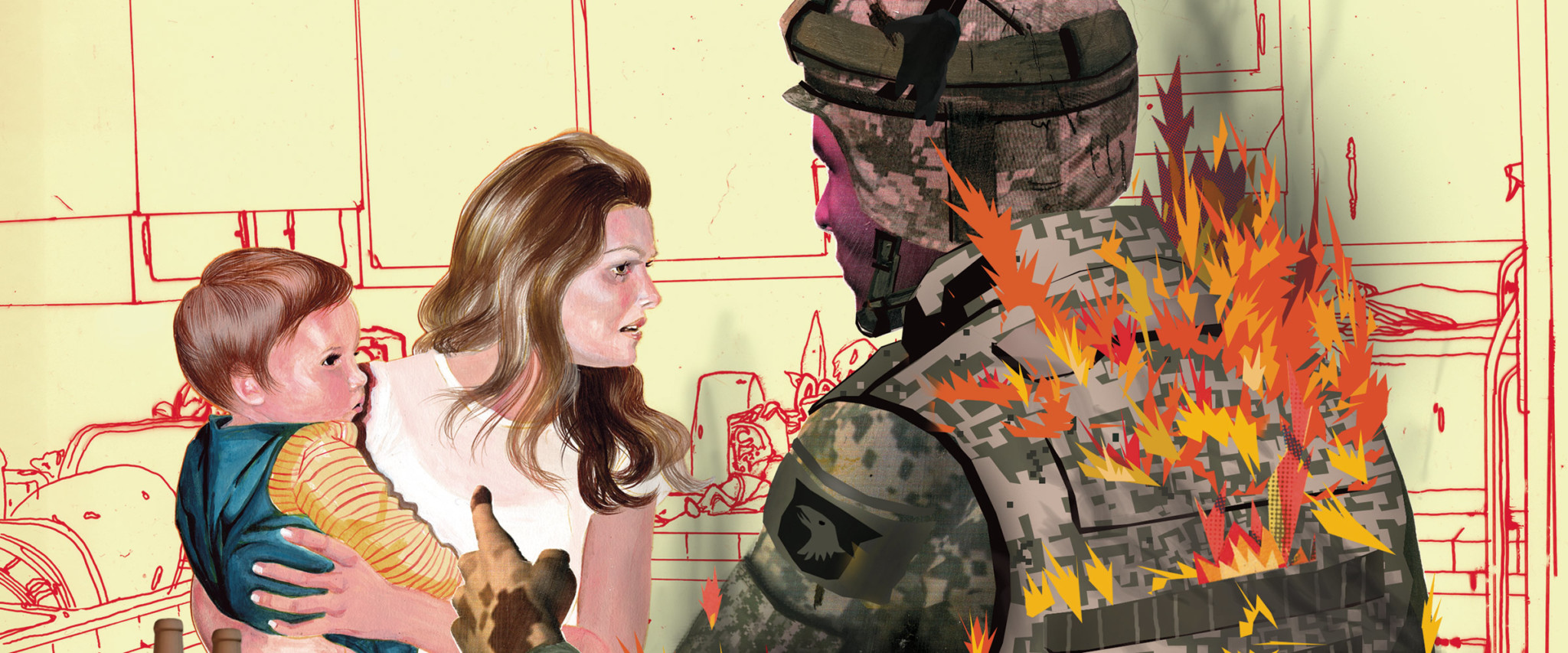Sgt. John M. Russell was perceived as a loner when he was stationed in Iraq last year. He was even described by one battalion officer as “quiet and introverted”–a man who shied away from social occasions and regularly skipped the army’s holiday meals. His absence from a company pizza party in Iraq on the evening of May 10, 2009, therefore, was not in itself cause for alarm. Nor was it likely that his peers were troubled that he wasn’t there–in recent weeks, Russell’s monologues had devolved almost entirely into angry, insecure complaints about how no one cared for him, coupled with a few instances of sexist rants that earned him reprimands from superior officers. Just weeks away from heading home to Sherman, Texas, Russell let everyone who listened know that he wanted out of Iraq, one way or another.
Machlinski sent messages to her son from her computer. For hours she heard nothing. Then at 12:13 a.m., knuckles rapped on her door.
Just weeks before, 19-year-old Michael Edward Yates Jr. had been on leave in Maryland, getting a taste of home midway through a tour in Iraq. He enjoyed a trip to the Salisbury Zoo with his infant son, Kamren, and was there for Kamren’s first birthday party.
Raised in American Corner, Md., Yates enlisted in the Army not to fulfill a lifelong goal or out of some sense of duty to his patriotically named community, but because, as a high school dropout, he just didn’t see many other options. Besides, many of his friends were doing the same. With the help of the Army, he earned his GED. Not long after, he was deployed as a cavalry scout at Forward Operating Base Hammer outside Baghdad.
As a child, Yates had received mental counseling for post-traumatic stress disorder (PTSD) stemming from life with an abusive father whose lengthy rap sheet included multiple convictions for assault and theft. Still, he thought he would be able to handle his duties and the daily violence he would encounter while stationed in Iraq. He was wrong.
As a cavalry scout, Yates expected to go on covert operations that involved more brainpower than brute force. Instead, his missions often consisted of cruising through a potentially hostile village in an Army Humvee and trying to figure out who was friend and who was foe. Yates would then return with his unit to eliminate any threat.
In one instant message to a peer, Yates described a case in which his unit stormed the wrong area of a village and killed an entire family. In other instances, children were themselves a threat, armed by terrorists. “That was a hard thing for him to handle,” says his mother, Shawna Machlinski. He had not expected killing adults, let alone children, to be a part of his basic duties.
While on leave and away from battle last April, Yates had time to reflect on Army life in Iraq. “He laid on my couch and cried, ‘Mom, I don’t want to go back,’” Machlinski says. Yates knew he had to return, but he didn’t want to go back to battle. He alerted the Army to his concerns, but, according to Machlinski, they kept Yates waiting at the Kuwait airport for nine days upon his return. This added to his frustration, and he contem- plated suicide, Machlinski says. He finally made it back to his unit when a major surrendered an airplane seat for him, and Yates was finally able to seek counseling at Camp Liberty.
For the first time since Yates left for Iraq on Thanksgiving Day 2008, Machlinski was able to fall asleep without worrying about her son being killed in combat. Yates would receive the counseling he needed, and he no longer would have to go on missions dodging bullets and improvised explosive devices (IEDs), she figured. But on Monday, May 11, a day after Mother’s Day, Machlinski turned on the television to see coverage of a shooting at Liberty. Sgt. John Russell had allegedly driven to the medical clinic and fired at least eight shots before being apprehended by the MPs as he exited the back door.
Machlinski sent repeated messages to Yates from her computer. For hours, she heard nothing. Then at 12:13 a.m., May 12, knuckles rapped on her door, confirming what she had feared: Michael was one of five who had been killed.
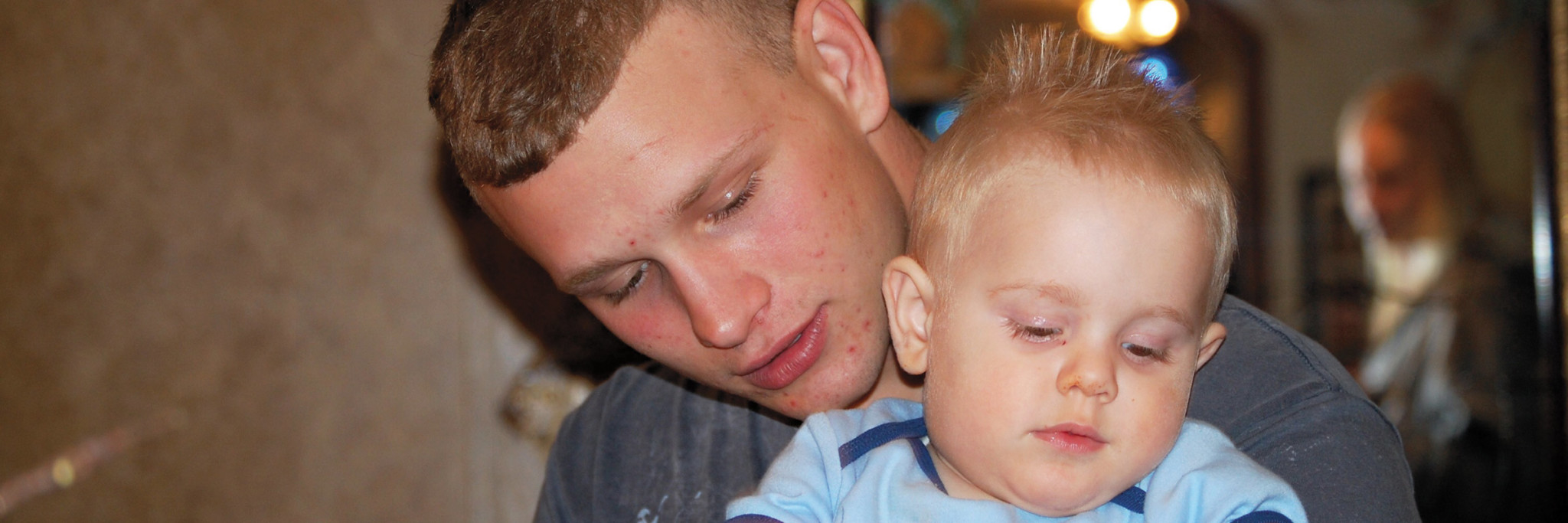
Two days earlier, Russell’s commanding officer was concerned enough about his increasing agitation and apparent depression that he had the bolt removed from Russell’s weapon, rendering it incapable of being fired. His superiors also scheduled counseling sessions for him at Camp Liberty in Baghdad.
On the morning of May 11, Russell woke up crying because he felt that he was a failure to his wife, accord- ing to testimony in the military’s investigation of what was to follow. Adding to his stress was a mortgage back in Texas, as well as his inability to progress in the Army at a level befitting someone with 15 years of active duty and additional time in the reserves.
Russell consulted with his battalion’s chaplain that morning and was command-referred to Camp Liberty for a noon appointment. As on his visits to other counselors, however, he didn’t feel that he was taken seriously and stormed out after less than two minutes. He blew by his company escort, meriting a call to the military police to take him back to his unit. At 12:18 p.m., Russell approached the arriving MPs, threw his knife down on the ground, and requested to be arrested. Since he had not committed a crime, however, the MP desk sergeant turned Russell back over to his unit at 12:49 p.m. and suggested he be kept under watch.
At 1:18 p.m., a soldier rushed to the 54th Engineer Battalion headquarters to report that Russell had stolen his M16 and hijacked a vehicle. The MPs issued a BOLO (be on the lookout) for Russell, but no one thought to contact nearby Camp Liberty.
Post-traumatic stress disorder is among the conditions most frequently diagnosed at military counseling clinics in Iraq, but clinical depression leads the pack. According to a spring 2009 mental health assessment, depression was the most common mental condition at 30 percent of all diagnoses, followed by adjustment disorders (18 percent), psychosis (12.5 percent), then PTSD, personality disorders, and unspecified non-psychotic disorders, at 5.3 percent each. The figures for PTSD rise dramatically when veterans return home. According to a 2010 study performed by Stanford University physician Susan Frayne, in a sample group of 90,000 Iraq and Afghanistan veterans who made use of U.S. Veterans Health Administration services, 34.8 percent of men and 27.3 percent of women suffered from PTSD. These individuals also were more likely to suffer from other ailments, both mental and physical.
It’s not just combat issues that affect soldiers. In fact, Russell himself hadn’t seen any combat in Iraq, according to the military report—as an engineer, he worked on military machines, such as those that detonate IEDs. There is a direct correlation, experts say, between the length and frequency of deployments (Russell had served in Bosnia and Kosovo before serving three deployments in Iraq) and issues back home—relationships, financial stress—that cause combat stress in American soldiers.
“This is something that can haunt the individual and really plague their lives for decades,” says Dr. Susan Kennedy, a Denison psychology professor whose research focuses on stress and addiction. Soldiers may be most commonly associated with PTSD, but anyone who has experienced either prolonged or intense, uncontrollable, horrific experiences—physical or emotional abuse, a tragic car accident, or war—can developthe disorder. PTSD manifests itself once the victim has escaped the trauma.
“This is something that’s tucked away in a file. It really affects everything in life,” Kennedy says. People suffering from PTSD often suffer nightmares and memory loss. Terrifying events replay again and again while the brain fails to create new memories or retrieve more pleasant ones. Victims become especially prone to drug and alcohol abuse as their relationships suffer. According to the U.S. Department of Veterans Affairs, between 60 and 80 percent of Vietnam War veterans seeking PTSD treatment also report problems with alcohol.
With tens of thousands of soldiers returning from Iraq, Kennedy says cases of PTSD and co-occurring disorders are bound to rise. “I think we really owe it to them to reintegrate them very slowly,” she says. “They don’t just come home and seamlessly blend back into society.” Successful integration often requires the sup- port of family and friends, professional counseling, and contact with others who’ve been through similar experiences. “It takes a village,” Kennedy says.
Chronic stress can actually cause brain damage, Kennedy cautions. People with PTSD often have less tissue in the hippocampus, a part of the brain that is heavily involved in both memory and emotion. “Any kind of stress, if it’s prolonged enough, can be neurotoxic, can be damaging to the brain,” says Kennedy, whose research has focused on stress in young animals and how it affects drug responses later in life. Prolonged stress can also weaken the immune system, leading to upper respiratory infections, illnesses, and susceptibility to viruses, tumors, and, some researchers believe, cancer.
An increasing self-awareness may revolutionize how we deal with issues such as combat stress and PTSD, and it may help prevent violence like the shooting that took Yates’ life. Knowledge about the disorder—called “shell shock” during World War I, “combat fatigue” during World War II, and “post-traumatic stress syndrome” during Vietnam—has advanced, and now emerging science could put that knowledge to practical use.
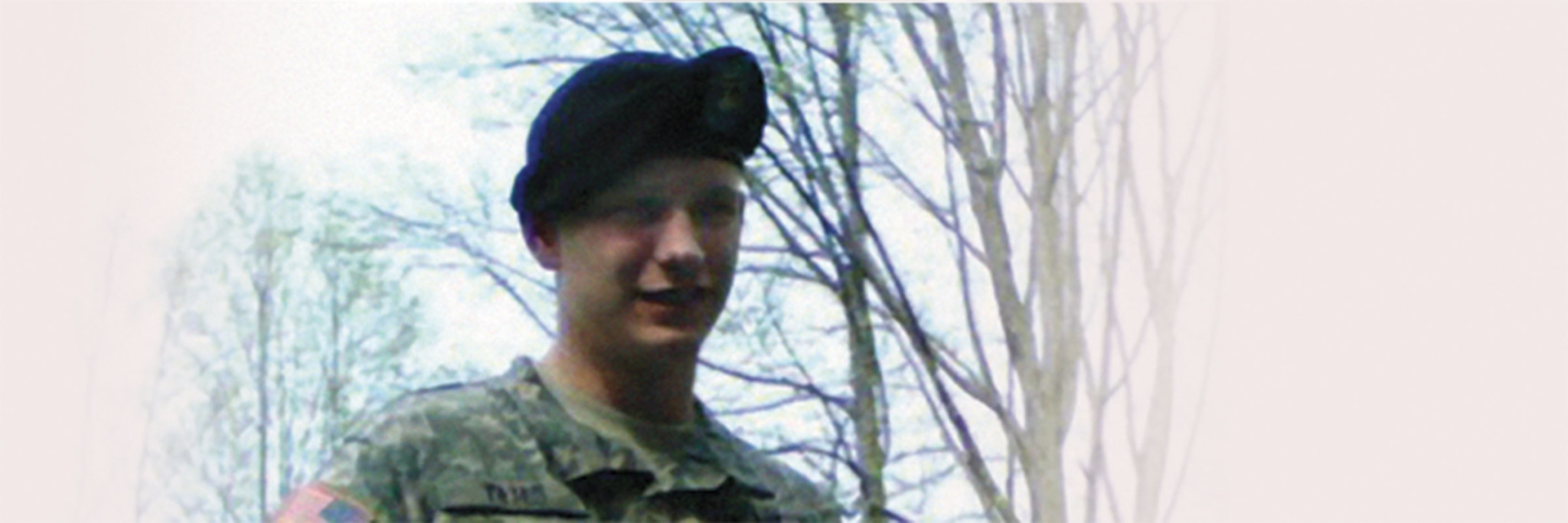
Machlinski sent messages to her son from her computer. For hours she heard nothing. Then at 12:13 a.m., knuckles rapped on her door.
Just weeks before, 19-year-old Michael Edward Yates Jr. had been on leave in Maryland, getting a taste of home midway through a tour in Iraq. He enjoyed a trip to the Salisbury Zoo with his infant son, Kamren, and was there for Kamren’s first birthday party.
Raised in American Corner, Md., Yates enlisted in the Army not to fulfill a lifelong goal or out of some sense of duty to his patriotically named community, but because, as a high school dropout, he just didn’t see many other options. Besides, many of his friends were doing the same. With the help of the Army, he earned his GED. Not long after, he was deployed as a cavalry scout at Forward Operating Base Hammer outside Baghdad.
As a child, Yates had received mental counseling for post-traumatic stress disorder (PTSD) stemming from life with an abusive father whose lengthy rap sheet included multiple convictions for assault and theft. Still, he thought he would be able to handle his duties and the daily violence he would encounter while stationed in Iraq. He was wrong.
As a cavalry scout, Yates expected to go on covert operations that involved more brainpower than brute force. Instead, his missions often consisted of cruising through a potentially hostile village in an Army Humvee and trying to figure out who was friend and who was foe. Yates would then return with his unit to eliminate any threat.
In one instant message to a peer, Yates described a case in which his unit stormed the wrong area of a village and killed an entire family. In other instances, children were themselves a threat, armed by terrorists. “That was a hard thing for him to handle,” says his mother, Shawna Machlinski. He had not expected killing adults, let alone children, to be a part of his basic duties.
While on leave and away from battle last April, Yates had time to reflect on Army life in Iraq. “He laid on my couch and cried, ‘Mom, I don’t want to go back,’” Machlinski says. Yates knew he had to return, but he didn’t want to go back to battle. He alerted the Army to his concerns, but, according to Machlinski, they kept Yates waiting at the Kuwait airport for nine days upon his return. This added to his frustration, and he contem- plated suicide, Machlinski says. He finally made it back to his unit when a major surrendered an airplane seat for him, and Yates was finally able to seek counseling at Camp Liberty.
For the first time since Yates left for Iraq on Thanksgiving Day 2008, Machlinski was able to fall asleep without worrying about her son being killed in combat. Yates would receive the counseling he needed, and he no longer would have to go on missions dodging bullets and improvised explosive devices (IEDs), she figured. But on Monday, May 11, a day after Mother’s Day, Machlinski turned on the television to see coverage of a shooting at Liberty. Sgt. John Russell had allegedly driven to the medical clinic and fired at least eight shots before being apprehended by the MPs as he exited the back door.
Machlinski sent repeated messages to Yates from her computer. For hours, she heard nothing. Then at 12:13 a.m., May 12, knuckles rapped on her door, confirming what she had feared: Michael was one of five who had been killed.
Battles of the Brain
Dob Bennett ‘80 knew first-hand what it was like to have a family member suffer a debilitating brain injury. His father lived for many years after a car accident that caused him to lose much of his memory. So Bennett paid close attention when he started to hear stories about soldiers coming back from Iraq having trouble getting proper care for head injuries. It just didn’t seem right–sending people into harm’s way and then not taking care of them when they returned.
Bennett, retired CEO of Liberty Media, could have done what countless others undoubtedly did–shake his head, say what a tragedy, and keep going about his business. Instead, he decided to put his personal capital and clout to work by founding a program called Operation TBI Freedom (OTF) to assist both active soldiers and veterans from Bennett’s home state of Colorado who have suffered traumatic brain injuries (TBI).
Brain injuries, which can be caused merely by the shock waves of an explosion, have been called the signature wound of the Iraq and Afghanistan conflicts. The Pentagon estimates about 115,000 soldiers have mild TBIs. Critics counter that the military screening systems do a poor job of evaluating TBIs and suggest that the number is closer to 400,000. Regardless, it’s a problematic condition to diagnose and treat.
“More often than not, head injuries are invisible,” says Bennett. “People who have suffered brain injuries don’t necessarily have intact thinking processes. They have cognitive and memory issues. They have impulse control issues. It’s very hard for them to advocate for themselves. The transition from the military to the VA is often not a very good one because the soldiers don’t always have the ability to process the paperwork or remember their appointments.”
Since 2008, Operation TBI Freedom has helped soldiers and their families who are in crisis around housing issues, rent, food, utilities, legal and financial problems, and marriage difficulties, according to OTF care coordinator and former Marine sergeant Alfredia Johnson: “I help them get some resources to take care of those issues so they can better focus on the medical piece of their recovery.” Sometimes the help they provide is dramatic, such as suicide prevention. Other times, support takes an unexpected form–a personal assistance device for someone with memory issues to help them stay on top of their medical appointments, for instance, or a “date night” gift certificate for a couple in marriage counseling. “It could be a good night’s sleep,” says Johnson, who is one of five full-time OTF coordinators. “It could be a bed because they don’t have one. The care coordination I do is all relative to the needs of the soldier or veteran and his or her family.”
One of the most satisfying stories, for Bennett, involved a wounded soldier waiting to be discharged. The only stable thing in her life was her dog. “Then the dog became ill and needed surgery, and she couldn’t afford it,” he says. “Her care coordinator was able to find a vet who agreed to do the surgery for free. It’s a little thing, but it totally changed her life–as opposed to having to put down her dog in the middle of all the other issues she was having.”
Bennett has provided the lion’s share of the funding for OTF since its inception, but the organization is now beginning to solicit external funding as well. “This country has given me tremendous opportunities,” he says. “I just felt a civic obligation to give back.” For more information, visit operationtbifreedom.org.
–Sally Ann Flecker
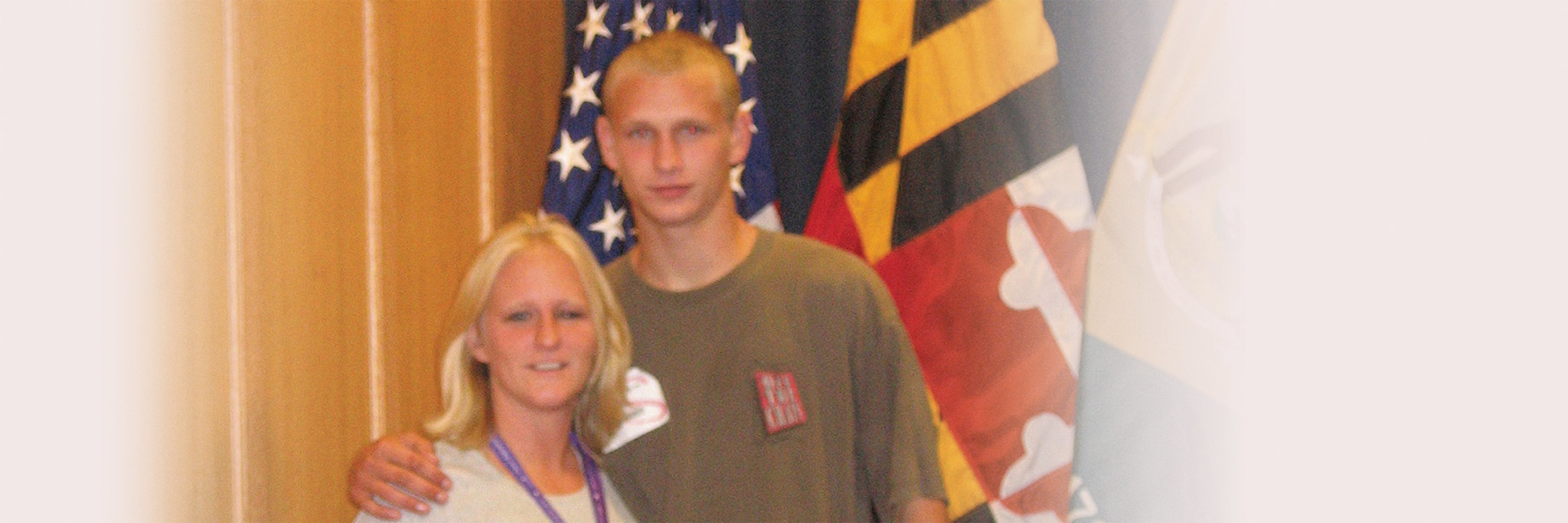
People with PTSD often have less tissue in the hippocampus, a part of the brain that is heavily involved in both memory and emotion.
The weeks following Yates’ death were a blur for his family, but the shootings were as real as the cameras and microphones that arrived on their doorstep soon after. The shooting at Camp Liberty–at the time the worst violence committed by a U.S. soldier against fellow servicemen since the war started in 2003–brought the issues surrounding PTSD and skyrocketing suicide rates among service members to the forefront (although Russell has not been officially diagnosed with having the disorder). According to an August 2010 report from the Department of Defense Task Force on the Prevention of Suicide by Members of the Armed Forces, more than 1,100 members of the Armed Forces committed suicide from 2005 through 2009–with the suicide rate in the Army doubling in that time span. “If we’ve learned anything from this war, it’s that not all injuries are physical,” Maj. Gen. Daniel P. Bolger, the commander of the division responsible for Baghdad, told The Washington Post the day of the shooting.
With the Afghanistan War in its 10th year, and troops remaining in Iraq even with that war officially decreed “over” by President Barack Obama last summer, the American public has become increasingly aware of the burden that fighting insurgents takes on soldiers’ mental health. According to figures released by the Pentagon earlier this year, mental health issues led military members to far more hospital stays (17,538) than battle injuries (11,156) in 2009. That compares to 13,702 mental health hospitalizations in 2007 and 11,335 in 2005.
The events at Camp Liberty on May 11, perhaps more than any other incident in the past decade, showcased the mental issues that can result when members of the military are subjected to long periods of time in insurgent hotbeds, away from friends and family. The shootings also called into question the military’s handling of mental health and the screening of service members before they are shipped abroad. Shortly after the Camp Liberty shooting, the government launched an ongoing study into behavioral health services in the military. “I think they should take a look at [the soldiers] a little better than they do before they put them in a combat situation,” Machlinski said. “Could I say that my son never should have been in the Army? I don’t know.”
In the last year, the Army has rolled out new mental health screening exams for soldiers both before and after deployment, while the Department of Defense (DOD) Task Force made 76 recommendations aimed at lowering the suicide rate. Machlinski and her husband, Richard Van Blargan, hope the changes make a difference, but remain skeptical about the impact unless the overall military mentality changes. The couple have two other children from past marriages who are serving in the military. They tell their parents that there are now more mechanisms in place for dealing with mental issues, but that the stigma of seeking treatment remains. As the DOD Task Force’s report finds, “Those who seek or need behavioral health care are commonly stigmatized and discriminated against, reinforcing the pervasive belief in the military that receiving behavioral health care is career-ending and that those who seek it are constitutionally weak.”
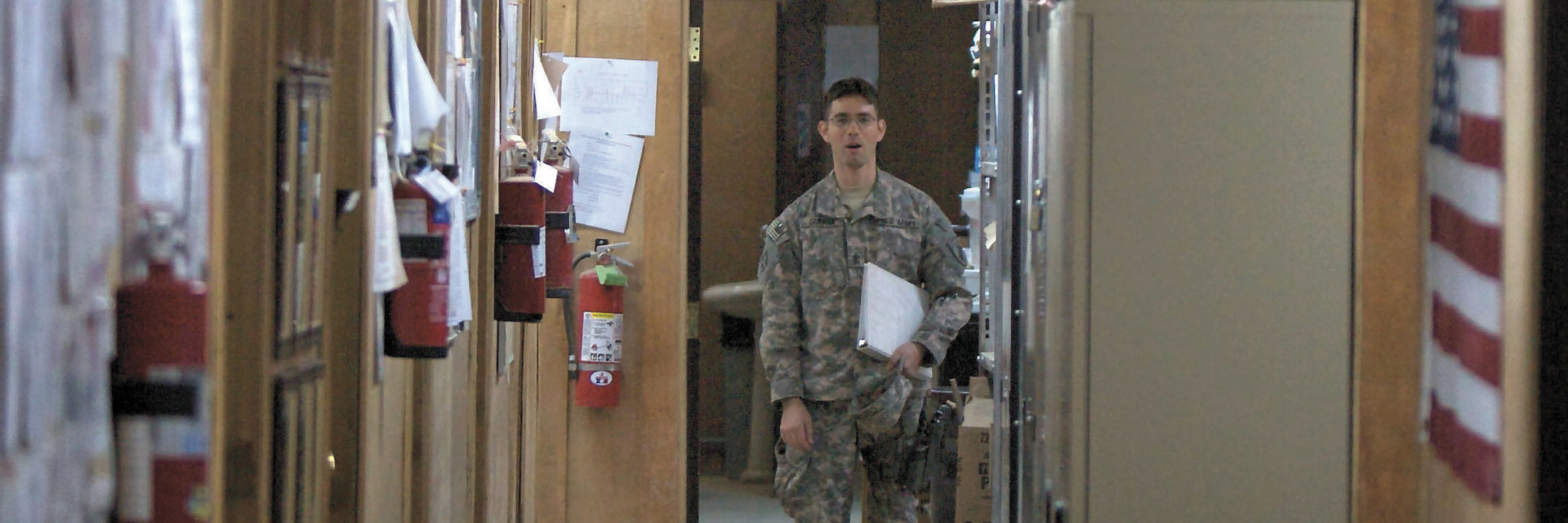
Post-traumatic stress disorder is among the conditions most frequently diagnosed at military counseling clinics in Iraq, but clinical depression leads the pack. According to a spring 2009 mental health assessment, depression was the most common mental condition at 30 percent of all diagnoses, followed by adjustment disorders (18 percent), psychosis (12.5 percent), then PTSD, personality disorders, and unspecified non-psychotic disorders, at 5.3 percent each. The figures for PTSD rise dramatically when veterans return home. According to a 2010 study performed by Stanford University physician Susan Frayne, in a sample group of 90,000 Iraq and Afghanistan veterans who made use of U.S. Veterans Health Administration services, 34.8 percent of men and 27.3 percent of women suffered from PTSD. These individuals also were more likely to suffer from other ailments, both mental and physical.
It’s not just combat issues that affect soldiers. In fact, Russell himself hadn’t seen any combat in Iraq, according to the military report—as an engineer, he worked on military machines, such as those that detonate IEDs. There is a direct correlation, experts say, between the length and frequency of deployments (Russell had served in Bosnia and Kosovo before serving three deployments in Iraq) and issues back home—relationships, financial stress—that cause combat stress in American soldiers.
“This is something that can haunt the individual and really plague their lives for decades,” says Dr. Susan Kennedy, a Denison psychology professor whose research focuses on stress and addiction. Soldiers may be most commonly associated with PTSD, but anyone who has experienced either prolonged or intense, uncontrollable, horrific experiences—physical or emotional abuse, a tragic car accident, or war—can developthe disorder. PTSD manifests itself once the victim has escaped the trauma.
“This is something that’s tucked away in a file. It really affects everything in life,” Kennedy says. People suffering from PTSD often suffer nightmares and memory loss. Terrifying events replay again and again while the brain fails to create new memories or retrieve more pleasant ones. Victims become especially prone to drug and alcohol abuse as their relationships suffer. According to the U.S. Department of Veterans Affairs, between 60 and 80 percent of Vietnam War veterans seeking PTSD treatment also report problems with alcohol.
With tens of thousands of soldiers returning from Iraq, Kennedy says cases of PTSD and co-occurring disorders are bound to rise. “I think we really owe it to them to reintegrate them very slowly,” she says. “They don’t just come home and seamlessly blend back into society.” Successful integration often requires the sup- port of family and friends, professional counseling, and contact with others who’ve been through similar experiences. “It takes a village,” Kennedy says.
Chronic stress can actually cause brain damage, Kennedy cautions. People with PTSD often have less tissue in the hippocampus, a part of the brain that is heavily involved in both memory and emotion. “Any kind of stress, if it’s prolonged enough, can be neurotoxic, can be damaging to the brain,” says Kennedy, whose research has focused on stress in young animals and how it affects drug responses later in life. Prolonged stress can also weaken the immune system, leading to upper respiratory infections, illnesses, and susceptibility to viruses, tumors, and, some researchers believe, cancer.
An increasing self-awareness may revolutionize how we deal with issues such as combat stress and PTSD, and it may help prevent violence like the shooting that took Yates’ life. Knowledge about the disorder—called “shell shock” during World War I, “combat fatigue” during World War II, and “post-traumatic stress syndrome” during Vietnam—has advanced, and now emerging science could put that knowledge to practical use.
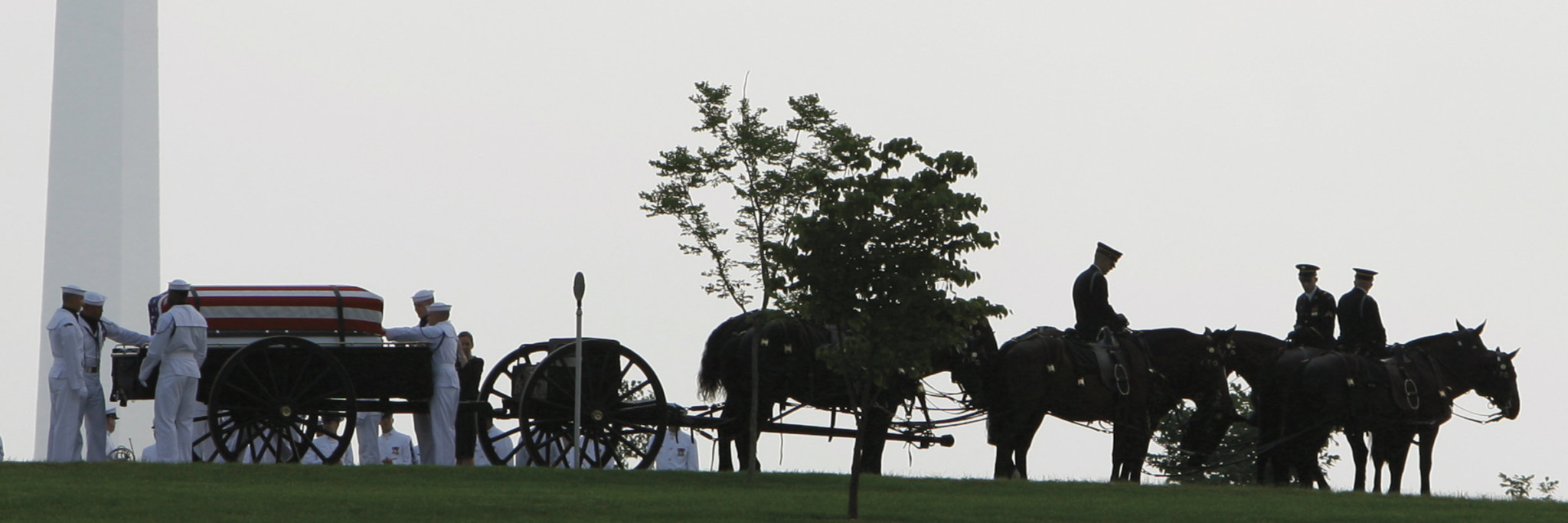
If preliminary science continues to develop, the military may be able to conduct brain scans to determine suitability for service based on the area of the brain believed to play a major role in stress.
It all has to do with the hippocampus, which essentially functions as a primitive brain, having developed in humans earlier in evolution than other sections. “The question’s going to be ‘where’s the chicken and where’s the egg?’” says Dr. Mark Baganz ’83, a neuroradiologist who works at Chesapeake Medical Imaging’s four offices in Maryland. While doctors have found a definite link between the size of the hippocampus and PTSD, they have yet to solve the puzzle of whether a smaller hippocampus can lead to PTSD, or whether the disorder erodes the brain.
Magnetic Resonance Imaging (MRI) lends itself to evaluating the hippocampus, Baganz says, because imaged cross-sections reveal the volume of that section of the brain and allow neuroradiologists to examine it qualitatively as well, looking for abnormalities in contour and fluid content. Baganz has not done any independent research on the issue himself, but he has followed it with interest as it relates to his own research into the link between health disorders and temporal lobe abnormalities in children.
“This opens a new opportunity for neuroimaging to provide an assessment for PTSD,” Baganz says. But he cautions, “Is there going to be a predictive test we can do? We don’t know that that’s going to be the case.” The answer may be determined only after conducting massive prospective studies that assess subjects before experiencing trauma, then again afterwards.
Somewhat optimistically, though, Baganz notes that twin studies have been conducted in instances in which one of the siblings has developed PTSD. Those studies have shown that both twins have decreased hippocampal volume, implying that the hippocampus was smaller to begin with and not necessarily worn down by PTSD. In time, doctors will not only be able to predict who is at risk, but also to gauge how large that risk is based on the extent of hippocampal abnormalities. “These people can be considered just like flat-footed people used to be—not suitable for combat,” Baganz says of those most at risk. In other words, soldiers like Yates and Russell might never be deployed in the first place.
There is the matter of cost, but by Baganz’s calculations, determining who could be at risk for developing a lifelong ailment and keeping those individuals from the fray could save the government plenty of money. In a doctor’s office, a brain MRI costs about $500—a figure that an afflicted soldier could spend on medications in only a few months. Get the Department of Defense involved, and that $500 fee could be trimmed substantially. While a scanner itself may cost $1 million, Baganz estimates 50 recruits per day—1,000 per month—could be analyzed using that single scanner, which could drive the cost down to less than $100 per recruit. “The cost of caring for PTSD can be huge,” he notes, citing therapy, medications, and increased unemployment. “It can last a lifetime.”
If we’re ever able to analyze recruits at this low cost, we may well owe it to the armed forces. “I think most neuroscientists would say if there’s something you can do that has predictive validity, it would be worth implementing more regularly,” Kennedy says.
It’s too late for people like Michael Yates and John Russell. Russell awaits trial on counts of murder and aggravated assault at Fort Lewis, Wash., where prosecutors could seek the death penalty. Having recently been declared mentally competent, Russell will likely stand trial in 2011.
Machlinski and Van Blargan knew that losing a child in military service was a real possibility, but they never expected it to be like this. The manner of Yates’ death and the looming trial have compounded their own stress, although they’re also proud of him for receiving a Bronze Star and posthumous promotion for his actions on May 11, 2009, the details of which won’t be revealed until after Russell’s trial. Yate’s mother finds strength from others who have been through similar experiences, but she doesn’t want more parents to join her. “I don’t wish this on anyone,” says Machlinksi.
Steve Nery ‘03 is a freelance writer living in Easton, Md.
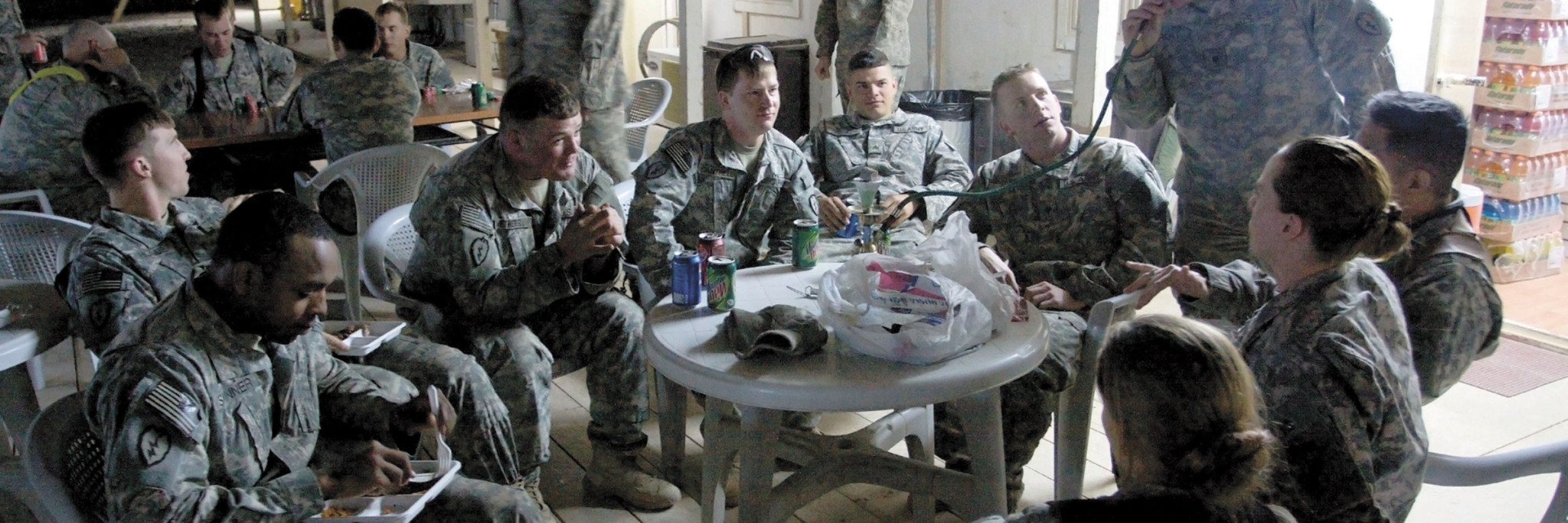
Battles of the Brain
Dob Bennett ‘80 knew first-hand what it was like to have a family member suffer a debilitating brain injury. His father lived for many years after a car accident that caused him to lose much of his memory. So Bennett paid close attention when he started to hear stories about soldiers coming back from Iraq having trouble getting proper care for head injuries. It just didn’t seem right–sending people into harm’s way and then not taking care of them when they returned.
Bennett, retired CEO of Liberty Media, could have done what countless others undoubtedly did–shake his head, say what a tragedy, and keep going about his business. Instead, he decided to put his personal capital and clout to work by founding a program called Operation TBI Freedom (OTF) to assist both active soldiers and veterans from Bennett’s home state of Colorado who have suffered traumatic brain injuries (TBI).
Brain injuries, which can be caused merely by the shock waves of an explosion, have been called the signature wound of the Iraq and Afghanistan conflicts. The Pentagon estimates about 115,000 soldiers have mild TBIs. Critics counter that the military screening systems do a poor job of evaluating TBIs and suggest that the number is closer to 400,000. Regardless, it’s a problematic condition to diagnose and treat.
“More often than not, head injuries are invisible,” says Bennett. “People who have suffered brain injuries don’t necessarily have intact thinking processes. They have cognitive and memory issues. They have impulse control issues. It’s very hard for them to advocate for themselves. The transition from the military to the VA is often not a very good one because the soldiers don’t always have the ability to process the paperwork or remember their appointments.”
Since 2008, Operation TBI Freedom has helped soldiers and their families who are in crisis around housing issues, rent, food, utilities, legal and financial problems, and marriage difficulties, according to OTF care coordinator and former Marine sergeant Alfredia Johnson: “I help them get some resources to take care of those issues so they can better focus on the medical piece of their recovery.” Sometimes the help they provide is dramatic, such as suicide prevention. Other times, support takes an unexpected form–a personal assistance device for someone with memory issues to help them stay on top of their medical appointments, for instance, or a “date night” gift certificate for a couple in marriage counseling. “It could be a good night’s sleep,” says Johnson, who is one of five full-time OTF coordinators. “It could be a bed because they don’t have one. The care coordination I do is all relative to the needs of the soldier or veteran and his or her family.”
One of the most satisfying stories, for Bennett, involved a wounded soldier waiting to be discharged. The only stable thing in her life was her dog. “Then the dog became ill and needed surgery, and she couldn’t afford it,” he says. “Her care coordinator was able to find a vet who agreed to do the surgery for free. It’s a little thing, but it totally changed her life–as opposed to having to put down her dog in the middle of all the other issues she was having.”
Bennett has provided the lion’s share of the funding for OTF since its inception, but the organization is now beginning to solicit external funding as well. “This country has given me tremendous opportunities,” he says. “I just felt a civic obligation to give back.” For more information, visit operationtbifreedom.org.
–Sally Ann Flecker

